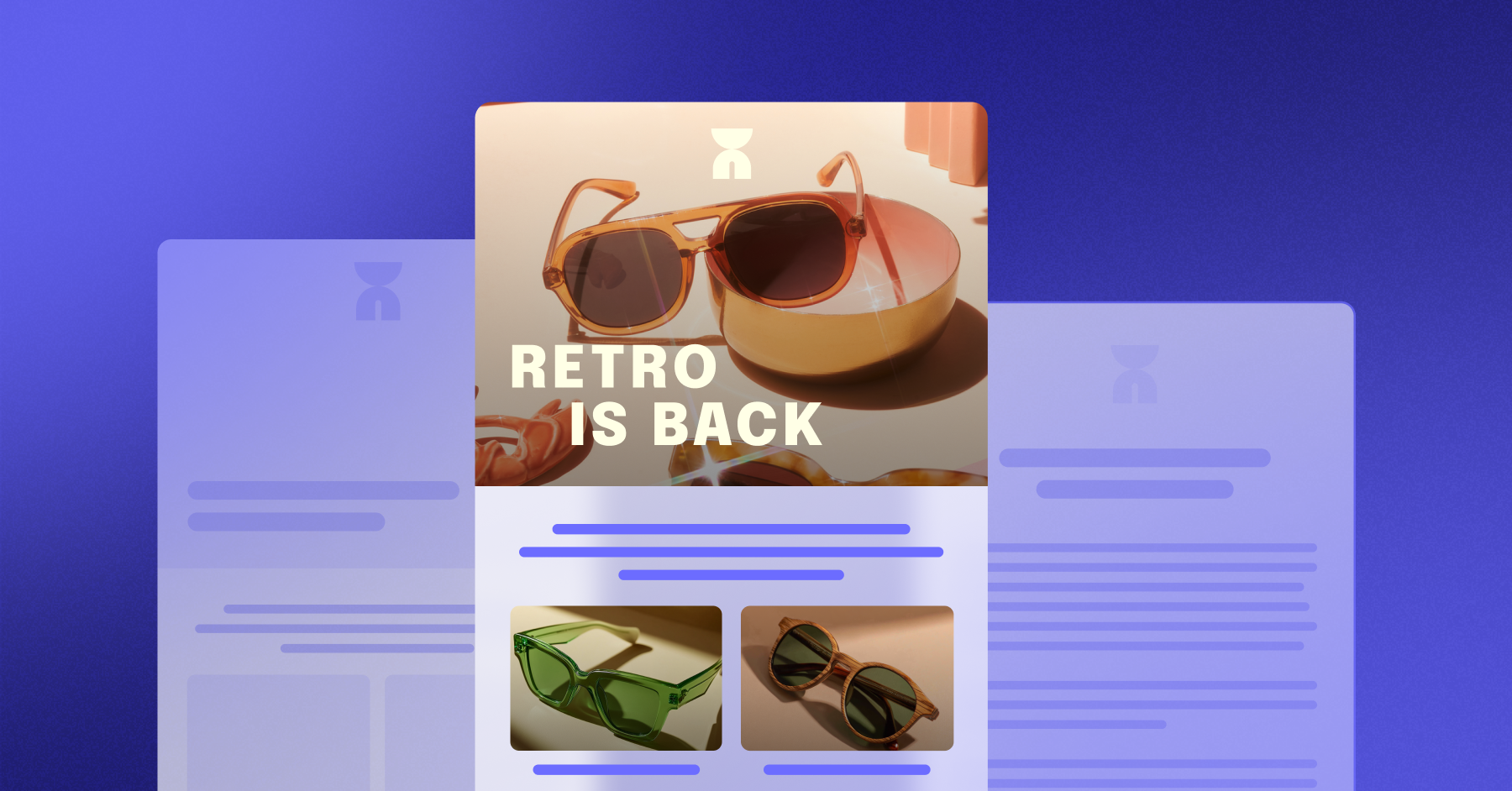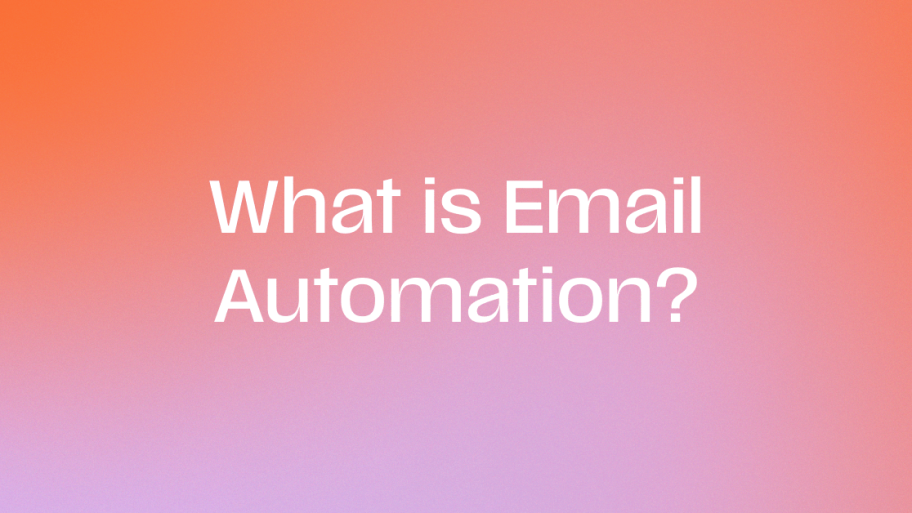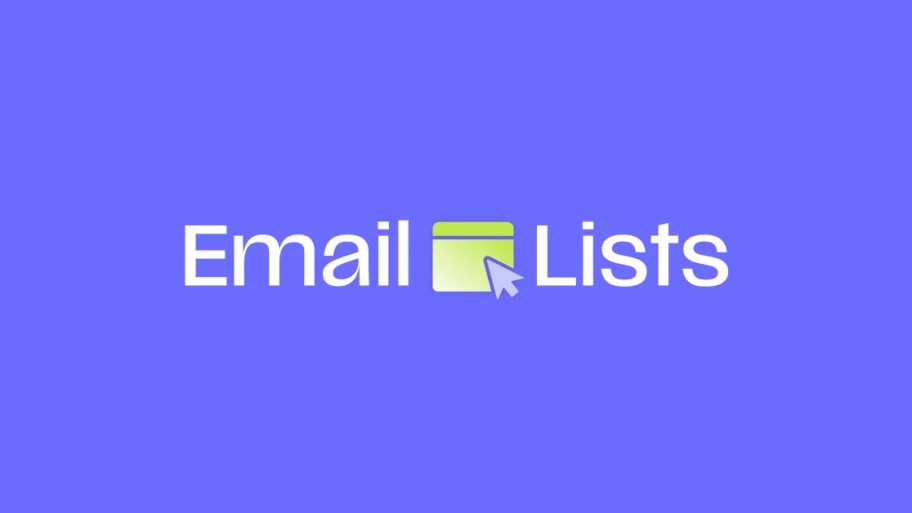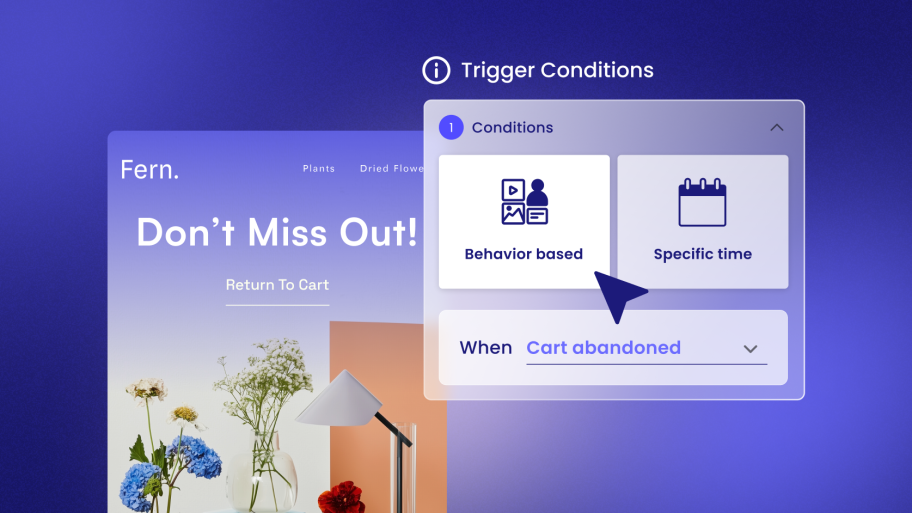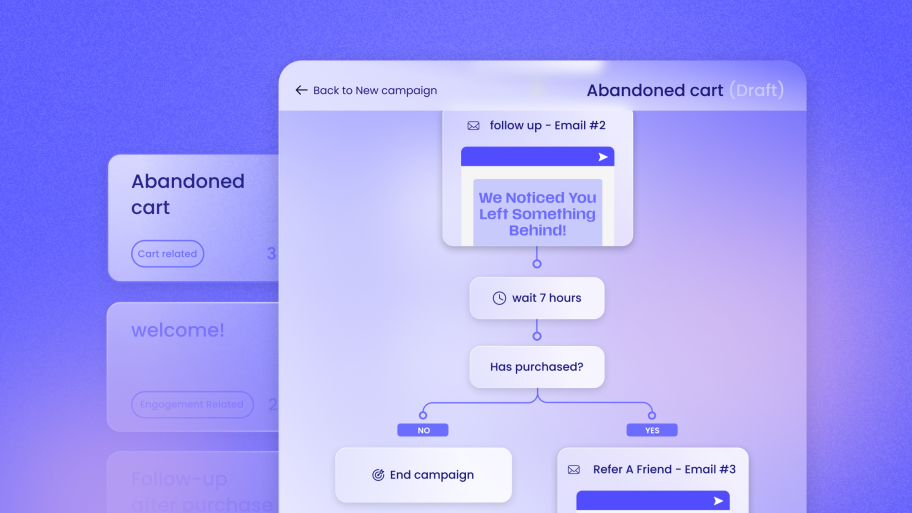The Psychology Behind a Great Subject Line
Why do some subject lines make us click while others get instantly deleted? It’s not random. The best ones tap into basic human psychology. They create a connection and trigger a response, making them feel relevant and timely. Understanding these triggers can help you craft more effective subject lines.
Triggering Curiosity
Humans are naturally curious. We have a deep-seated desire to close information gaps. When a subject line hints at something interesting without giving everything away, it creates a sense of intrigue. This is known as the “curiosity gap.” You’re essentially teasing your audience, making them feel like they need to know more.
Think about subject lines like, “Don’t open this email.” What’s your first instinct? For many, it’s to open it. This technique works because it plays on our desire to uncover the unknown. However, it’s a fine line to walk. The content of your email must deliver on the promise of the subject line. If it doesn’t, you risk disappointing your audience and losing their trust.
Creating a Sense of Urgency
Have you ever jumped on a sale because it was for a “limited time only”? That’s urgency at work. Subject lines that create a sense of urgency motivate people to act quickly. They tap into the fear of missing out (FOMO). When subscribers believe they might lose an opportunity, they’re more likely to open your email immediately rather than putting it off.
Words and phrases like “Last chance,” “24 hours left,” or “Ending soon” are powerful motivators. This approach is especially effective for promotions, event registrations, and time-sensitive announcements. Just be sure to use it honestly. If you cry wolf too often with fake deadlines, your audience will catch on, and the tactic will lose its power.
Making it Personal
In a world of mass communication, personalization stands out. People want to feel seen and understood. Using a subscriber’s name in the subject line is a simple but effective start. It immediately grabs their attention because it’s personally relevant.
But true personalization goes deeper. It involves using data you’ve collected to tailor your message. Did a customer recently browse a specific product category? A subject line referencing that interest can be incredibly effective. For example, “John, still thinking about those running shoes?” feels much more personal than a generic promotional email. Tools with robust segmentation capabilities, like those found in Send by Elementor, allow you to group contacts based on their behavior, purchase history, or demographics, making this level of personalization possible.

Highlighting Value and Benefits
What’s in it for them? Your subscribers are busy, and their inboxes are full. Your subject line needs to quickly communicate the value of opening your email. Will they learn something new? Save money? Solve a problem?
Focus on the benefit, not just the feature. Instead of “New software update available,” try “Our new update helps you save an hour every day.” The second option clearly states the benefit for the user. It answers their unspoken question: “Why should I care?” When you make the value clear from the start, you give them a compelling reason to engage.
Best Practices for Writing Subject Lines
Now that we’ve covered the psychology, let’s get into the practical side of things. Following a few best practices can dramatically improve your open rates. These aren’t strict rules, but they are proven guidelines that help your subject lines perform better.
Keep it Short and Sweet
With a significant number of emails being opened on mobile devices, subject lines often get cut off. How short should you go? A good rule of thumb is to aim for around 50 characters or 6-8 words. This ensures that most of your message is visible, even on a small screen.
Being concise forces you to be clear. It strips away unnecessary words and gets straight to the point. Before you hit send, read your subject line and ask yourself: “Can I say this in fewer words?” Often, the answer is yes. This practice helps you craft punchy, impactful subject lines that are easy to digest at a glance.
Use Numbers and Lists
Numbers are powerful. They stand out in a sea of text and suggest a clear, organized message. When people see a number in a subject line, they perceive the content as being easy to scan and digest. For example, “5 ways to improve your website’s speed” is more appealing than “How to improve your website’s speed.”
Lists work for the same reason. They promise structured information that won’t overwhelm the reader. This is why listicles are so popular in blog posts and articles. The same principle applies to email. A numbered subject line sets the expectation for a straightforward, valuable read.
Ask Engaging Questions
Questions are a great way to start a conversation. They directly engage the reader and prompt them to think. A good question in a subject line can pique curiosity and make the subscriber feel like you’re speaking directly to them.
Consider something like, “Are you making these common marketing mistakes?” This type of question makes the reader pause and reflect. It creates a personal connection and encourages them to open the email to find the answer. The key is to ask questions that are relevant to your audience’s interests and challenges.
Leverage Emojis (Wisely)
Emojis can add a touch of personality and visual flair to your subject lines, helping them stand out in a crowded inbox. They can convey emotion and add context in a way that text alone can’t. A shopping bag emoji for a sale or a gift emoji for a special offer can instantly communicate the email’s purpose.
However, it’s important to use them wisely. Overusing emojis can make your email look spammy or unprofessional. Know your audience. A playful emoji might work well for a direct-to-consumer brand but might not be appropriate for a B2B service provider. Also, remember that emojis can render differently across email clients. Always test to ensure they look the way you intend.
A/B Test Your Subject Lines
You won’t know what works best for your audience until you test it. A/B testing involves sending two versions of an email to a small segment of your audience, with only the subject line being different. One group gets subject line A, and the other gets subject line B. The version with the higher open rate is then sent to the rest of your list.
This process takes the guesswork out of writing subject lines. It provides you with data-driven insights into what resonates with your subscribers. Do they respond better to questions or statements? Do emojis increase your open rates? Consistent A/B testing helps you refine your strategy over time and continuously improve your results.
101+ Subject Line Examples for Every Occasion
Ready for some inspiration? Here’s a comprehensive list of subject line examples broken down by category. Use these as a starting point and adapt them to fit your brand’s unique voice and your specific campaign goals.
Welcome Emails
A welcome email is your first real opportunity to build a relationship with a new subscriber. It sets the tone for future communications. Your subject line should be friendly, clear, and reassuring.
Simple and Direct
- Welcome to [Brand Name]!
- You’re in! Welcome to the community.
- Thanks for subscribing to [Brand Name].
- Welcome! Here’s what to expect.
- So glad to have you with us!
Benefit-Oriented
- Welcome! Your [Discount/Offer] is inside.
- Ready for a better [Benefit]? Welcome!
- Welcome to [Brand Name]! Let’s get started.
- Your journey to [Goal] starts now.
- You’re in! Get ready for exclusive tips.
Promotions and Sales
When you’re running a promotion, your subject line needs to create excitement and a sense of urgency. Clearly state the offer and give subscribers a reason to act now.
Highlighting the Discount
- 50% Off Everything. Yes, everything.
- Your special offer: 25% off your next order.
- Don’t miss out! 40% off for 48 hours.
- It’s here! Our biggest sale of the year.
- Psst… A special discount just for you.
Creating Urgency
- Last chance: 30% off ends tonight!
- Clock’s ticking! Don’t miss this sale.
- Your weekend offer is about to expire.
- Final hours for free shipping.
- This deal is disappearing…
Sparking Curiosity
- A surprise offer is waiting for you.
- Is this the sale you’ve been waiting for?
- We don’t do this often…
- An exclusive offer for our favorite customers.
- Your gift is inside.
Newsletters and Content Updates
Newsletters are about providing value and keeping your audience engaged. Your subject lines should be intriguing and clearly communicate what the reader will gain from your content.
Question-Based
- What if you could [achieve goal]?
- Did you know about this new feature?
- Are you getting the most out of [Product]?
- The secret to [topic]? We’ve got it.
- What’s new at [Brand Name]?
List-Based
- 5 articles you can’t miss this week.
- 3 tips for a more productive Tuesday.
- Your weekly roundup of industry news.
- 7 resources to help you succeed.
- The top 10 trends you need to know about.
Benefit-Focused
- Your weekly dose of inspiration.
- Fresh ideas, delivered to your inbox.
- Become an expert with these resources.
- Actionable advice you can use today.
- Don’t just work hard, work smart.
New Product Announcements
Launching a new product is exciting! Your subject line should build anticipation and clearly announce what’s new. Focus on what makes your new product special and why your audience should be excited about it.
Direct and Clear
- It’s here! Introducing the new [Product Name].
- The wait is over. [Product Name] has arrived.
- Be the first to try our new [Product].
- Just launched: The [Product] you’ve been asking for.
- Say hello to the new [Product Name].
Highlighting a Key Benefit
- The solution to your [Problem] is finally here.
- Get ready to [Achieve Benefit] with our new product.
- A smarter way to [Task].
- Your [Activity] is about to get an upgrade.
- Finally, a [Product Category] that works.
Cart Abandonment
Cart abandonment emails are a crucial tool for recovering lost sales. Your subject line should be a gentle reminder, possibly with a helpful tone or an added incentive to complete the purchase. Crafting these emails is simple when using a tool with pre-built automation flows, a key feature of platforms like Send by Elementor.
Simple Reminders
- Did you forget something?
- Your cart is waiting for you.
- Still thinking it over?
- Don’t leave these behind!
- You left some items in your cart.
Offering Help or an Incentive
- Can we help? Your cart is saved.
- Complete your order and get 10% off.
- Your items are selling out fast!
- Let’s make it official. Free shipping on us.
- A special offer to complete your purchase.
Re-engagement Campaigns
Sometimes, subscribers go quiet. A re-engagement campaign is your chance to win them back. Your subject lines should be friendly, acknowledge their absence, and offer a compelling reason to reconnect.
Direct and Personal
- We miss you, [Name]!
- Is this goodbye?
- It’s been a while…
- Are we still a good match?
- Let’s catch up.
Offering an Incentive
- A special gift to welcome you back.
- We want you back! Here’s 20% off.
- Come back and see what’s new.
- An exclusive offer to restart our friendship.
- Did you miss us? Here’s a little something.
Event Invitations and Webinars
For events and webinars, your subject line should be informative and create a sense of excitement. Clearly state the topic, date, and what attendees will learn.
Clear and Informative
- You’re invited: [Webinar Title].
- Join us for a live Q&A on [Topic].
- Save your spot: [Event Name] on [Date].
- Free training: Learn how to [Skill].
- An exclusive invitation to our upcoming event.
Highlighting Value
- Unlock the secrets to [Topic] with our experts.
- Learn from the best in the industry.
- The skills you need for [Goal].
- Ask us anything: A live session with our team.
- Don’t miss this chance to level up.
Feedback and Survey Requests
Getting feedback is essential for improving your business. Your subject lines for survey requests should be polite, explain why you’re asking, and often, offer a small incentive for their time.
Simple and Direct
- Got a minute? We’d love your feedback.
- How did we do?
- Share your thoughts on your recent purchase.
- Help us improve [Product/Service].
- Your opinion matters to us.
Incentivized
- Take our survey and get a 15% discount.
- A chance to win a $100 gift card for your feedback.
- Your feedback is valuable (and so is this coupon).
- Help us, help you. And get a free gift.
- A quick survey for a big thank you.
Holiday and Seasonal Campaigns
Holidays are a prime time for email marketing. Your subject lines should be festive and timely. Tap into the holiday spirit to create a connection with your subscribers.
Festive and Fun
- 🎄 Our holiday gift guide is here!
- Spooky good deals for Halloween. 🎃
- Happy Holidays from our team to yours.
- Sleigh your holiday shopping with these deals.
- Ring in the New Year with savings.
Urgency-Driven
- Last day for holiday shipping!
- Black Friday deals are here!
- Don’t be late! Order your gifts now.
- Cyber Monday starts now.
- Your holiday checklist is inside.
Just for Fun
Sometimes, the best subject lines are the ones that don’t try to sell anything at all. These build brand personality and strengthen your relationship with your audience.
- A joke to make you smile.
- TGIF! Here’s something fun.
- Our favorite reads this month.
- A playlist for your weekend.
- Just checking in.
Integrating Subject Line Strategy with Your Tools
Crafting the perfect subject line is one piece of the puzzle. The other is having the right tools to execute your strategy effectively. A powerful communication toolkit can make all the difference, especially when it’s built to work seamlessly within your existing workflow.
The Power of a Native Solution
For those of us who build and manage websites, especially on WordPress, integration is everything. Juggling multiple platforms, dealing with conflicting plugins, and syncing data can be a major headache. This is where a WordPress-native solution like Send by Elementor really shines. When your email and SMS marketing tools are built specifically for WordPress, everything just works better.
With Send by Elementor, you can manage email campaigns, segment your audience, and view analytics all from your WordPress dashboard. There’s no need to switch between different tabs or worry about data syncing correctly. This streamlined approach not only saves time but also allows you to be more agile and responsive in your marketing efforts.
From Creation to Automation
A good toolkit should support you through the entire process. It starts with creating beautiful, responsive emails. The drag-and-drop email builder in Send by Elementor makes it easy to design professional-looking campaigns without needing to be a coding expert. Access to ready-made templates, designed with Elementor best practices in mind, can also give you a great head start.
But it’s automation that truly unlocks the power of your email strategy. Think about those cart abandonment emails we talked about. With Send by Elementor, pre-built automation flows allow you to set them up once and let them run in the background, recovering sales while you focus on other things. From welcome series to re-engagement campaigns, automation helps you deliver timely, relevant messages at scale.
And let’s not forget SMS. Integrating SMS marketing alongside your email efforts allows you to reach customers on a more immediate and personal channel. Whether you’re sending a quick promotional text or a shipping notification, having email and SMS in one unified platform like Send by Elementor gives you a comprehensive view of your customer communications.
Measuring What Matters
Finally, you need to know what’s working. Clear, real-time analytics are non-negotiable. You should be able to track open rates, click-through rates, and most importantly, the revenue your campaigns are generating. Send by Elementor provides real-time analytics directly within the WordPress dashboard. When you can directly attribute sales to your marketing activities, it’s easy to demonstrate the value of your work to clients or stakeholders. This data is what fuels your A/B testing and helps you make smarter decisions over time.
Having these capabilities within a single, integrated toolkit simplifies your workflow and empowers you to create more effective campaigns. It allows Web Creators to move beyond just building websites and offer ongoing value to their clients, helping them grow their businesses and fostering stronger, long-term relationships.
Final Thoughts
The subject line is small but mighty. It’s the first impression that determines whether your email gets opened or ignored. By understanding the psychology behind what makes people click, following best practices, and continuously testing your approach, you can significantly improve your open rates and the overall success of your email marketing.
Remember to keep your audience at the center of your strategy. What do they care about? What are their challenges? When you write subject lines that speak directly to their needs and interests, you’re not just asking for a click—you’re starting a conversation. So, take the time to craft thoughtful, compelling subject lines. Your audience, and your bottom line, will thank you for it.
